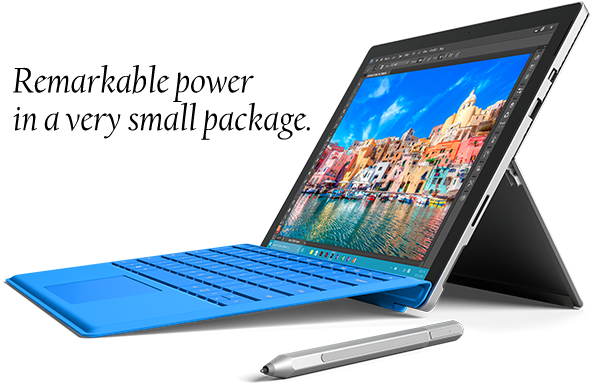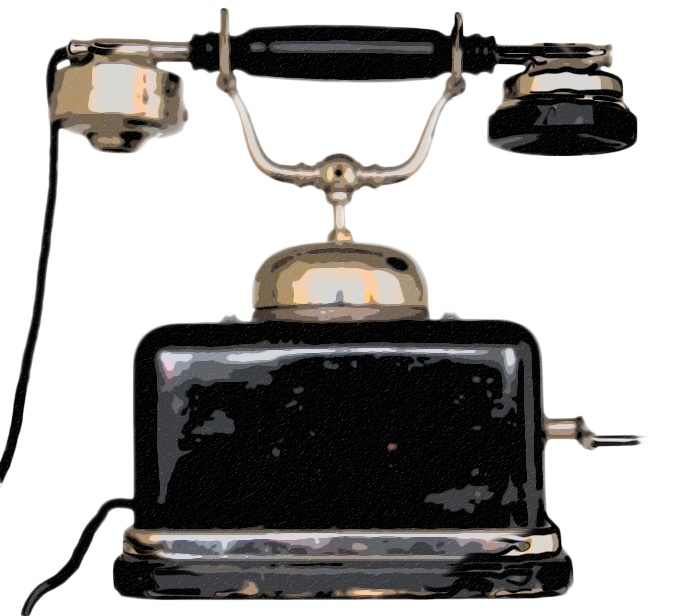Last October you may have heard or read my initial report on Microsoft's Surface 4 tablet. As I recall, the article indicated cautious optimism. A problem with the Intel video subsystem and Intel video drivers created problems for a lot of people and has created a glut of reconditioned Surface 4 Tablets. Maybe you've seen them on Woot or Groupon or any number of other retail sites and wondered if you should buy one.
The problems users have experienced had little or nothing to do with the hardware or with the operating system. Instead, it was Intel's buggy video drivers and drivers for some of the peripherals, such as the docking station. And some of the problems dated back to the Surface 2.
As of late April firmware and driver updates seem to have resolved the video problems. And, truth be told, most of the time the video problems were relatively minor. Typically, a message would pop up with an explanation that the video driver had stopped working. The tablet would then restart the video driver and, in most cases, no work was lost. Most people, most of the time. But still it was frustrating, particularly for those who bought the high-end Surface tablets or Surface Book notebook computers. At the high end, some of them approach $3000.
Mine is much more modest. It's a handy device, but not critical to my daily work flow, and so I was considerably more laid back about finding a solution to th e problem.
e problem.
It's still not perfect, but I knew better than to expect perfection. Occasionally the keyboard stops responding. Easy fix: Detach the keyboard and re-attach it. This takes somewhere between 3 and 5 seconds. Another minor irritant, but that's about all.
Microsoft sells the keyboard, which also acts as a protective cover for the screen, as an add-on. I think that's wrong. It should simply be included and, yes, that would increase the price by about $200; but you need a keyboard because Microsoft's on-screen virtual keyboard is useless.
It sounds as if I don't like the Surface Pro 4, but I do. By way of history, when the original Surface started shipping, I thought that it had a lot of promise, but I didn't buy one. The Surface 2 looked even better, but waiting seemed like a better idea. I nearly bought a Surface 3, so when the Surface 4 was released -- with some impressive specifications, it took me less than a week to decide that the time had come.
You have a choice of Intel processors -- m3, i5, or i7. If you need to do a lot of photo or video editing, choose the i7. Otherwise, save a bundle of cash and go with the i5, which is powerful enough to do just about anything you'll need to do with a notebook or tablet computer. I didn't even consider the m3.
I picked a mid-range solid-state drive instead of shelling out a lot to buy half a terabyte or a full terabyte of space that really isn't needed on a portable device. I can move files on and off the Surface at any time. And a slot for a MicroSD card lets you add storage space easily.
Wi-Fi and Bluetooth are build in and the wireless adapter handles A, B, G, and N variants of the 802.11 protocol. Memory ranges from 4 to 16GB of RAM. There's a full-size USB 3 port (you can add more with the docking station), a 5Mpxl front-facing camera, and an 8Mpxl rear-facing camera. Oh -- and the tiny built-in speakers are phenomenal.
I have become so used to having a touch screen (Surface, smart phone, and Android tablet all have them) that when I tried to sign in at the Red Cross last week the receptionist had to remind me that the computer didn't have a touch screen and I'd have to use the mouse. I had already realized that and was reaching for the mouse, but I suspect that it's not uncommon for people to try logging in by tapping on the screen.
The Surface Pro 4 takes advantage of its touch-screen interface when used as a tablet. With the keyboard attachment, which has a built-in touchpad, it's more like a standard notebook. I use a Bluetooth mouse, but you can also use a USB mouse if you prefer. The Surface Pen makes free-hand note taking possible, but I haven't made much use of the pen.
Surface tablets are popular with corporations, too, particularly for employees who have to travel a lot. Remember when portable computers weighed 10 pounds or more (the early ones were a lot more than 10 pounds)? A full-size power notebook can still weigh in at 5 or 6 pounds. That doesn't seem like much until you have to carry it, with all your other carry-on stuff, from gate 001 to gate ZZZ at an airport. It's popular with travelers because the Surface weighs about 2 pounds.
The hybrid design is becoming increasingly popular and several other manufacturers are making Surface-like devices. After 7 months of using a Surface tablet for at least a few tasks every day, I'm generally impressed.
Reading has changed in the past few years. Libraries now loan electronic books in addition to physical books. Some book stores sell e-books. And Amazon, of course. But now there's BookBub, a service that runs 1-day sales on e-books. Some of them are offered for free.
Free is a good price and the books offered for free are often first books by new authors. Sometimes the books are several years old, though, and are on the publisher's backlist.
This week I picked up a copy of Lyndon Johnson and the American Dream by Doris Kearns Goodwin. I had previously read and enjoyed her book about Lincoln, Team of Rivals. The Kindle version was available for $3.
BookBub sends daily e-mail alerts that describe available books that match the recipient's interests. It's a free service and it supports all major e-book readers such as Amazon, Barnes & Noble, Apple's iBooks, and Kobo.
What's in it for authors and publishers? Promotion. Publishers and authors can reasonably consider the reduced price or free books as advertising -- as a way to build word of mouth support for their books.
During the sign-up process, subscribers provide their e-mail address and fill out a form that indicates their favorite e-book genres and retailers. Daily e-mails list books that fit the preferences. Clicking a link in the e-mail opens the retailer's website where the reader can buy the book at the reduced price (or, in some cases, download it for free).
From cook books and mysteries to children's books and biographies, BookBub lists nearly 30 genres. According to BookBub, publishers and authors submit hundreds of e-book deals every day for consideration. BookBub's editorial team reviews the submissions to determine which should be offered to subscribers. About 80% of the submissions are not accepted.
BookBub charges publishers and authors a fee to be included in the BookBub daily e-mail.
If you'd like more information: www.bookbub.com.
Occasionally I read a juvenile fiction book. One that I'm reading now features a young woman (about 18) who is a computer coding wizard. This seems perfectly reasonable to this grumpy old guy, but there's still a general belief that girls don't code.
Girls Who Code is trying to destroy stereotypes in computer science and has released what it terms a series of videos that present "absurd theories why girls 'can't' code." Girls Who Code is a non-profit organization that wants to eliminate the gender gap in technology.
The videos satirize stereotypes and address reasons why women are underrepresented in computer science. The videos point to ridiculous reasons. Examples: They have boobs. They have periods. They're beautiful. The videos are intended to stimulate thought and conversations about how silly these unconscious biases are. Here's an example:
The others in the series: Menses and Beauty.
Women represent only about 20% of computer science graduates. The group says that the gender gap starts in adolescence, when teenage girls rank computing and engineering as some of the least interesting professions. Several studies cite negative stereotypes and media portrayals of coders as nerdy and male as top reasons why young women lose interest.
The founder and CEO of Girls Who Code, Reshma Saujani, says that many inspirational videos about why girls should code already exist. She wanted to take a different approach. "We wanted to use humor and satire to question the stereotypes that tell our girls that coding is not for them." Saujani says she hopes that the videos will spark a conversation about the messages society sends young women "and what we can do to create a more inclusive, well-rounded image of a programmer."
In addition to the satirical videos, Girls Who Code has also released a YouTube series called "My Code" about learning how to code from the perspective of four Girls Who Code alumnae. The weekly series is updated every Thursday on YouTube.
If you'd like more information about the group, visit the Girls Who Code website.
It's been a long time since domain registrar GoDaddy was just a domain registrar. The company provides website hosting, e-mail services, and a variety of other services intended for small business users. Next up: Telephone service.
 GoDaddy plans to purchase FreedomVoice for $42 million in cash plus up to $5 million in potential future payments. The company notes that more than 210 million small businesses exist globally and most rely on mobile or desktop phones to communicate with their customers. The acquisition will allow GoDaddy to provide what they call "another essential service for small businesses and organizations to create and maintain their digital identity."
GoDaddy plans to purchase FreedomVoice for $42 million in cash plus up to $5 million in potential future payments. The company notes that more than 210 million small businesses exist globally and most rely on mobile or desktop phones to communicate with their customers. The acquisition will allow GoDaddy to provide what they call "another essential service for small businesses and organizations to create and maintain their digital identity."
FreedomVoice offers communications services for small businesses, including custom phone numbers (both local and toll-free) that route business-related calls to a user's mobile phone.
Chief Product Officer, Steven Aldrich, says that many of the company's 14 million customers have struggled to find affordable communications services. Aldrich says that FreedomVoice will fit well with GoDaddy because both companies strive to harness the power of the cloud to deliver products that fit the needs of small businesses.
FreedomVoice products will continue to be available on-line and through partners. GoDaddy and FreedomVoice plan to deliver new cloud-based voice products in the near future. The company will continue to maintain offices in Encinitas, California.
Sometimes it seems that people who write about technology are crazy. Or stupid. Or rabid. Maybe all three. Some have an irrational dislike for Apple. Others are terrified by Linux. And others just can't bring themselves to admit that Microsoft ever does anything right. Case in point: Microsoft's latest attempt to upgrade Windows 7 and 8.1 systems to Windows 10. For free.
On the current agenda, we have CNet's question: Did Windows 10 upgrade pop-ups just get sneakier? We also have Neowin's supposed picture of an "outraged" Windows user (he looks more delighted than outraged to me). And what's all this brouhaha about? It's about this:
Microsoft is announcing a specific date and time when the user's computer will be upgraded (for free) to Windows 10. And if you don't want the upgrade, there's a link you can click to change the time or cancel the upgrade. How is this sneaky? I just don't get it.
Here's Neowin's approach to the story.
Look at the picture of the "outraged" user. It's clear that this is a stock image, but you'd think that Neowin would work a little harder to find a picture that really shows someone who is outraged. The expression is anything but that.
At least Neowin is honest enough to say "At first glance, this looks scary, but it doesn't really appear that much has changed, except for keeping users a bit more informed. (Emphasis mine.) As noted above, Windows 10 is already a recommended update, so assuming that you have those set to automatically install, this is simply providing you with the time that it is going to happen."
And what does CNet have to say? Did Windows 10 upgrade pop-ups just get sneakier?
 This is just plain silly. It's like the supermarket tabloid headlines that wonder if Elvis is really alive and working in a Michigan convenience store and then, by the end of the article, admits that the premise is little more than BS.
This is just plain silly. It's like the supermarket tabloid headlines that wonder if Elvis is really alive and working in a Michigan convenience store and then, by the end of the article, admits that the premise is little more than BS.
Even CNet readers pushed back, asking how a clear announcement can be sneaky.
And what will be next? As you know, the free upgrade period ends in a few months. After that, anyone who wants to upgrade a Windows 7 or Windows 8.1 computer to Windows 10 will have to pay for the upgrade. I'm willing to bet that most of the Microsoft haters will be back in full force then to claim that sneaky old Microsoft wasn't clear about when the free upgrade period would end.
If you really, really, really, really don't want to upgrade to Windows 10, see Microsoft's Knowledgebase entry on the subject.